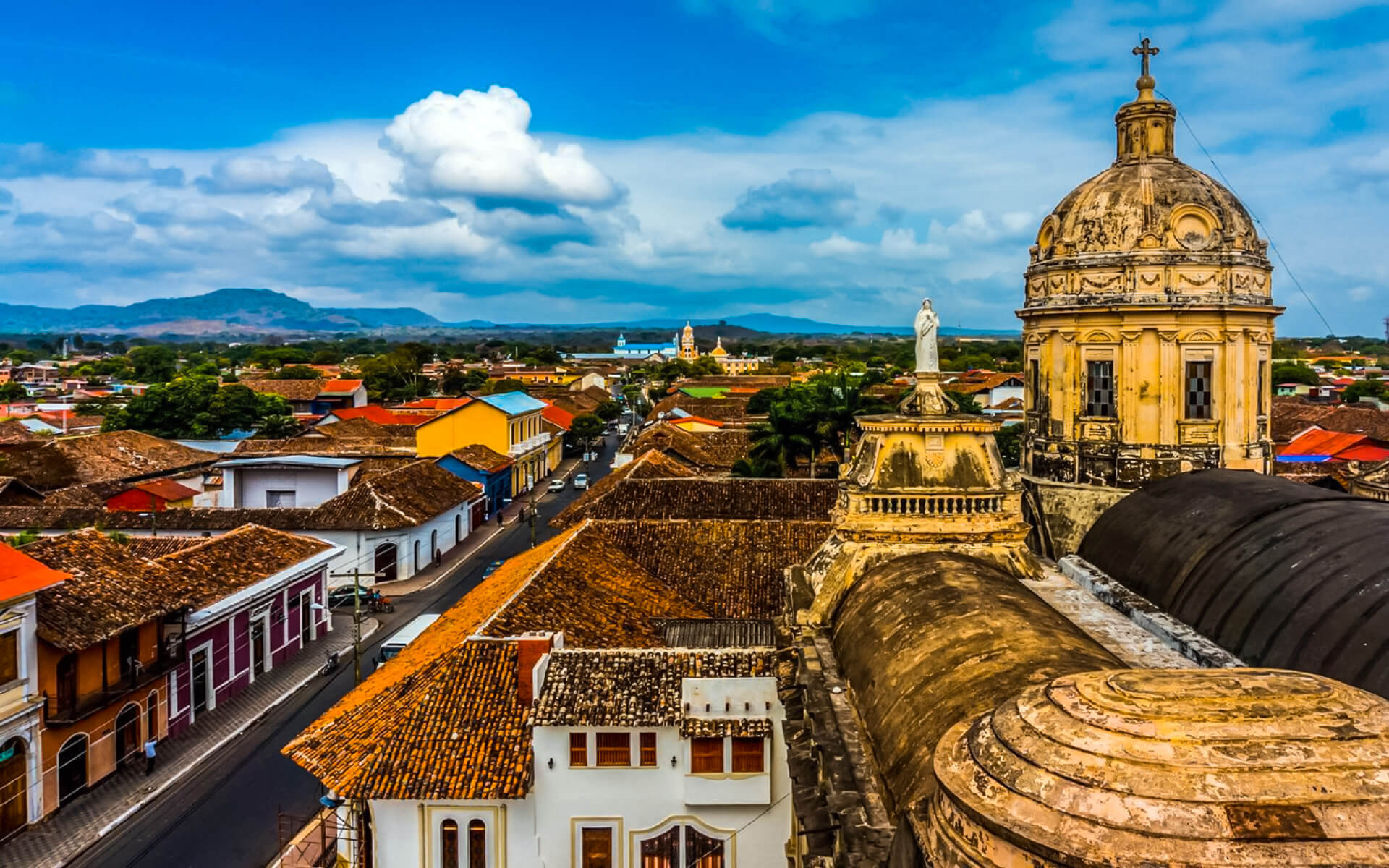Granada is Nicaragua’s oldest colonial city and Leon’s eternal adversary. It is situated on the Lago Cocibolca’s northwestern shore. Its vibrant colonial architecture, fascinating history, and relative safety make it a popular tourist destination. It is Nicaragua’s most expat-populated city and one of the most “developed” tourist destinations, both of which will be readily obvious to the visitor, particularly in comparison to other Nicaraguan cities.
Newspapers such as the New York Times have recognized Granada’s restaurants internationally. There are several restaurants in Granada, including Café Espressonista, Ciudad Lounge, Pita Pita, Garden Café, and Café de los Sueos. In recent years, Granada’s culinary industry has evolved to include both local and foreign dishes, while also promoting farm-to-table sustainability for local farmers and producers. Granada’s economy continues to expand in large part as a result of its rapid growth as a tourist destination for its colonial architecture, natural beauty, and, more recently, as a cuisine destination.
Granada, dubbed La Gran Sultana from her muslim-influenced Spanish moniker, is one of Nicaragua’s oldest towns and one of the first European colonies in the Americas. Granada, which was a prosperous town throughout the most of the colonial era, has always been and continues to be a conservative city. Granada was assaulted by pirates multiple times throughout its early history as a (kind of) “Caribbean Port,” linked to the ocean by the lake and the Rio San Juan. However, the assault that had the most devastating effect on the city was perpetrated by an American.
However, the town rebounded and became the dominant cultural and political power in the nation for the following thirty years, until liberal general Jose Santos Zelaya assumed control. You may still see remnants of Granada’s former richness and power in its colonial mansions and cathedrals. And practically every corner of downtown still has a memorial to some past president or other who was born here.
Granada is a conservative town, and the governing Sandinistas are not as popular – to put it mildly – as they are in León, contributing to their continuous rivalry. Today, however, Granada is also well-known for garnering prizes from American publications as one of the apparently most liveable cities on the planet, and many retired Gringos have established Granada as a second home. Numerous colonial homes and even some tiny islands just outside of town on Lake Nicaragua are still available for sale, so inquire with the locals if you want to stay long term and have the appropriate funds on hand.
While the Gringo influence is greater in Granada than in most other parts of Nicaragua, the city has retained its beauty and continues to draw visitors, residents, and expatriates alike.


